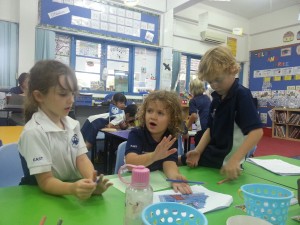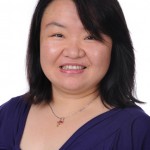This article provides examples of modeling for years 2 and 5, developing and assessing approaches to learning in both stand alone and integrated inquiries in a Mandarin classroom.
“Approaches to learning refer to those skills that students develop when they are learning how to learn and think effectively, and how to process information and manage their emotions: those skills that are currently identifies as ‘Transdisciplinary skills” in the PYP. The ultimate intention of approaches to learning across the IB continuum is to develop self-regulated (self-managed, self-directed, independent ) learners through skills -based, process – focused teaching.”
~ PYP Coordinator’s notes (November 2013, p. 2)
Mandarin PYP teachers have the same responsibility as all PYP teachers in developing students’ approaches to learning. It is important to ensure all five transdisciplinary skill areas are embedded in curriculum mapping, planned learning engagements, assessment tasks, strategies and tools. Some practical strategies like project-based collaborative learning and inquiry-based learning can be used widely in the Mandarin classroom. Other than authentically integrating with the central ideas of the programme of inquiry whenever possible, Mandarin teaching and learning can also authentically connect with the approaches to learning that are explicitly taught and assessed within units of inquiry. Mandarin teachers need to be mindful that an important part of their role is to model, develop and assess approaches to learning in both stand alone and integrated inquiries. Below is an example of each:

 Year 2 Where we are in place and time: In this inquiry unit, students explored the central idea ‘People live in unique homes, places and countries’, inquiring into different homes around the world and unique geographical elements. All five transdisciplinary skill areas were explicitly embedded in learning engagements and assessments. Students inquired into the unique homes and cultures of Chinese minority groups (research skills). Students found out the factors that affect the way these people live and the reasons for the ‘uniqueness’ of their house styles (thinking skills and communication skills). Based on their new understandings, groups of students designed, built and presented house models of a minority group of their choice (social skills and self-management skills). Many selected skills from these five skill sets were assessed through student self-reflection, peer-assessment and by teacher’s observation during the process of completing the inquiry. Checklists, anecdotal records and rubrics were used as assessment tools for these skills. Throughout the unit, students were aware of which skills they were being assessed on and which skills they were developing and learning.
Year 2 Where we are in place and time: In this inquiry unit, students explored the central idea ‘People live in unique homes, places and countries’, inquiring into different homes around the world and unique geographical elements. All five transdisciplinary skill areas were explicitly embedded in learning engagements and assessments. Students inquired into the unique homes and cultures of Chinese minority groups (research skills). Students found out the factors that affect the way these people live and the reasons for the ‘uniqueness’ of their house styles (thinking skills and communication skills). Based on their new understandings, groups of students designed, built and presented house models of a minority group of their choice (social skills and self-management skills). Many selected skills from these five skill sets were assessed through student self-reflection, peer-assessment and by teacher’s observation during the process of completing the inquiry. Checklists, anecdotal records and rubrics were used as assessment tools for these skills. Throughout the unit, students were aware of which skills they were being assessed on and which skills they were developing and learning.
Mandarin teachers also work hard to build students’ Mandarin knowledge and sustainable language skills through a variety of meaningful activities. It is important to recognize opportunities within those learning engagements that can help in the development of the approaches to learning.
In a stand alone year 5 unit (central idea ‘Clear communication helps us to purchase or sell items’) a variety of language outcomes and skills were developed and assessed. The key outcomes were to learn and revise numbers and the vocabulary of objects, and to enhance students speaking and writing skills. In addition, communication skills, social skills and self-management skills were also embedded, modeled and assessed at the same time. Students learned how to say and write money totals in Mandarin and practice conversations involving buying and selling. The summative assessment task required students to plan and organize a Market Day where they bought and sold a variety of small items, with profits being donated to a charity group. It is important to note that the students were actively involved in designing the assessments for this unit, selecting the approaches to learning they felt are most important to develop and assess to successfully participate and run the Market Day. Students were able to clearly see that to build and apply their Mandarin knowledge, they needed to develop and use a variety of transdisciplinary skills.
Once mandarin teachers are confident in their understanding of how to approach and assess the approaches to learning in their subject area, they will also be able to realize that the assessment and modeling of other essential elements of PYP written curriculum is also very achievable.
—
The article was originally published in The Red Dot, Issue 4, June 2015 – a Singapore/Malaysia PYP Network Newsletter.
—
DingDing Song is a PYP additional language teacher currently teaching Mandarin across Kindergarten to year 6 level at Chatsworth International School – East campus, Singapore. DingDing is a PYP workshop leader, school visiting team leader and school consultant in IB Asia Pacific region. She has also assisted IB Asia Pacific office in training workshop leaders and school visiting team members. DingDing enjoys organizing additional language teachers’ network within Singapore PYP schools. She has passion in helping PYP teachers gaining knowledge and understandings of PYP, as well as supporting candidate schools on their journey to becoming IB World Schools.


No comments yet.